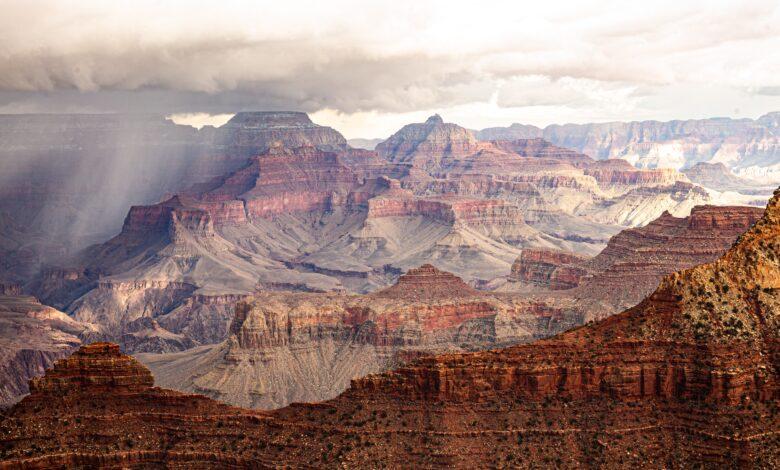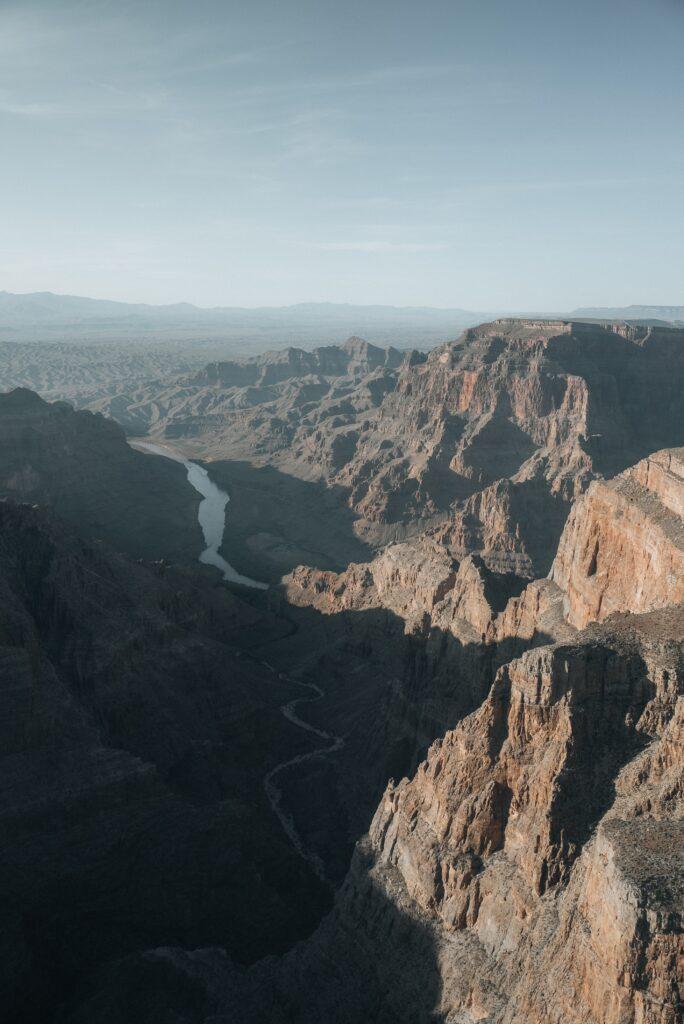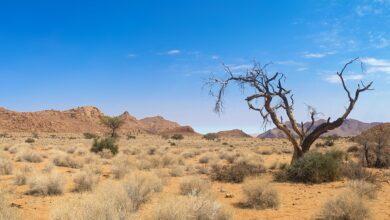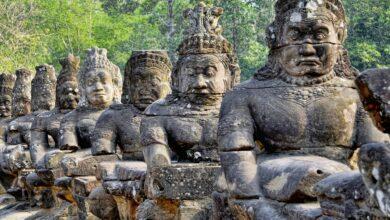🌵 A Taste of the Wild West: Visiting the Grand Canyon 🏜️
Unveiling the Majesty of the Grand Canyon's Wild West Wonders

Introduction
The American West is a place of rugged beauty, breathtaking landscapes, and a sense of boundless adventure. And at the heart of this untamed wilderness stands the iconic Grand Canyon, a natural wonder that has captured the imaginations of people for centuries. From its awe-inspiring vistas to its rich Native American heritage, a visit to the Grand Canyon promises an experience like no other. In this blog post, we’ll take you on a journey to the Wild West, exploring the grandeur of the Grand Canyon, planning your trip, discovering the Native American culture that thrives in its midst, and savoring the Wild West experience. So saddle up and join us as we embark on this extraordinary adventure.
The Grand Canyon: A Natural Wonder
Geology and Formation of the Grand Canyon
The Grand Canyon is a geological masterpiece that has been shaped by millions of years of natural processes. It is located in northern Arizona and is one of the most famous natural wonders in the world. The canyon itself is a massive chasm that stretches over 277 miles in length, with an average width of about 10 miles. Its depth can reach over a mile, exposing a fascinating geological history.
The Grand Canyon was formed by the erosional force of the Colorado River, which has been carving its way through the Colorado Plateau for approximately six million years. The layers of rock that make up the canyon’s walls reveal a stunning chronicle of Earth’s history, with some of the oldest rocks dating back nearly two billion years. This unique feature makes the Grand Canyon a living geological museum, where visitors can witness the various rock layers and their colors, each telling a different story about the Earth’s past.
Unique Features and Breathtaking Landscapes
The Grand Canyon is renowned for its unparalleled beauty and breathtaking landscapes. Its vast expanse offers a wide range of unique features that captivate visitors from around the world. One of the most iconic features is the Grand Canyon’s intricate network of side canyons and deep gorges, creating a labyrinth of incredible formations. These include natural amphitheaters, towering spires, and beautiful waterfalls, such as Havasu Falls, which add to the canyon’s allure.
The different elevations within the canyon lead to diverse ecosystems, from the ponderosa pine forests at the North Rim to the desert vegetation in the lower regions. The Grand Canyon offers a perfect blend of serene wilderness and awe-inspiring vistas. Sunrise and sunset at the canyon’s rim provide unforgettable moments as the sun’s rays cast enchanting hues on the rock layers, creating an ever-changing tapestry of colors and shadows.
Significance in Native American Culture
The Grand Canyon holds deep cultural and spiritual significance for several Native American tribes, including the Havasupai, Navajo, Hopi, Zuni, and Hualapai. For centuries, these tribes have inhabited the canyon’s surroundings, relying on its resources and establishing a spiritual connection with the land. The canyon is not only a place of historical significance but also a source of inspiration for art, stories, and ceremonies.
The Grand Canyon is often considered a sacred site, and many Native American tribes have creation myths and stories related to its formation. These stories reflect their profound connection to the canyon’s geological and natural wonders. Additionally, the tribes continue to play a vital role in preserving the Grand Canyon’s cultural heritage and advocating for its protection and conservation.
Incorporating the geology, unique features, and cultural significance of the Grand Canyon into your visit will enhance your understanding and appreciation of this extraordinary natural wonder. It’s a testament to the Earth’s geological history and the enduring relationship between humans and nature.
Planning Your Trip
Planning a trip to the Grand Canyon requires some careful consideration to make the most of your visit to this natural wonder. From choosing the best time to visit to making travel arrangements, here are some key aspects to keep in mind.
Choosing the Best Time to Visit
The Grand Canyon is a year-round destination, but the best time to visit depends on your preferences. Spring (March to May) and fall (September to November) are popular times due to milder weather and smaller crowds. The wildflowers in spring and the changing foliage in the fall add to the canyon’s beauty. Summer (June to August) is the peak tourist season with warmer temperatures, so expect larger crowds. Winter (December to February) offers a more peaceful experience, but some roads and facilities may be closed due to snow.
Consider your comfort and what you want to experience when selecting the time to visit. Each season brings its own unique charm to the Grand Canyon.
Accommodation Options Near the Grand Canyon
Choosing the right accommodation is essential for a comfortable and memorable trip to the Grand Canyon. The area offers a variety of lodging options to suit your preferences and budget. You can stay at one of the Grand Canyon’s lodges or in nearby towns like Tusayan or Williams.
If you want the convenience of staying inside the park, lodges like the historic El Tovar or Bright Angel Lodge provide a unique experience with stunning canyon views. Reservations for these lodges should be made well in advance, especially during the peak season.
For more budget-friendly choices, the towns near the Grand Canyon offer a range of hotels, motels, and campgrounds. These options provide a comfortable stay while still allowing easy access to the park.
Travel Tips and Transportation
Getting to the Grand Canyon involves careful planning and transportation choices. Here are some travel tips to make your trip smoother:
- Advance Reservations: Secure your lodging and any guided tours well in advance, especially during peak seasons, to ensure availability.
- Pack Essentials: Be prepared for the weather, whether it’s hot and sunny or chilly and rainy. Wear comfortable shoes for walking, and don’t forget essentials like sunscreen, a hat, and plenty of water.
- Transportation: The Grand Canyon has several entry points, so choose the one most convenient for your itinerary. The Grand Canyon Village on the South Rim and the North Rim are the primary entrances.
- Park Passes: Consider purchasing an America the Beautiful pass, which provides access to all national parks in the U.S., including the Grand Canyon.
- Guided Tours: Joining a guided tour can enhance your experience and help you explore the canyon’s hidden gems. Options include hiking tours, helicopter rides, and more.
By carefully planning your trip, selecting the best time to visit, choosing suitable accommodations, and following travel tips, you’ll be well-prepared to enjoy your visit to the Grand Canyon and create lasting memories of this remarkable natural wonder.

Exploring the Grand Canyon
Exploring the Grand Canyon is an adventure like no other. With its vast expanse and diverse landscapes, there are countless ways to immerse yourself in the beauty of this natural wonder. Here are some key aspects to consider when planning your exploration of the Grand Canyon.
Popular Viewpoints and Hiking Trails
The Grand Canyon boasts an array of popular viewpoints and hiking trails that offer different perspectives and experiences. Some of the most renowned viewpoints include Mather Point, Yavapai Point, and Hopi Point on the South Rim, and Bright Angel Point on the North Rim. These locations provide stunning panoramic views of the canyon, making them ideal for capturing breathtaking photographs and absorbing the sheer magnitude of this geological wonder.
For those looking to venture deeper into the canyon, there are numerous hiking trails suitable for various skill levels. The South Kaibab Trail and Bright Angel Trail are popular options for day hikes, leading you into the heart of the canyon. More challenging backpacking adventures can be found on the North Kaibab Trail and the Hermit Trail, where you can experience the Grand Canyon’s pristine wilderness and unique geological features up close.
Wildlife and Flora You Might Encounter
The Grand Canyon is not only a geological spectacle but also a haven for diverse wildlife and flora. As you explore the park, keep an eye out for a wide range of animals, including mule deer, California condors, bighorn sheep, and the elusive ringtail. Birdwatchers will be delighted by the variety of avian species, from hawks and eagles to hummingbirds and ravens.
The canyon’s vegetation is equally captivating, with unique plant life adapted to its extreme environment. You’ll find ponderosa pines at higher elevations, while cacti, yuccas, and agaves thrive in the lower desert regions. The vibrant colors and adaptations of these plants are a testament to nature’s resilience.
The Colorado River: Rafting and Adventure
The Colorado River has played a pivotal role in shaping the Grand Canyon over millions of years. For those seeking a more adventurous experience, rafting on the Colorado River is a thrilling option. Several companies offer guided rafting trips that allow you to journey through the heart of the canyon, witnessing its towering cliffs and serene stretches of water.
These river adventures vary in length and intensity, catering to both novice and experienced rafters. As you drift along the Colorado River, you’ll have the opportunity to explore hidden side canyons, marvel at the unique geology, and camp beneath the starlit Grand Canyon sky.
Exploring the Grand Canyon is a remarkable journey that combines natural beauty, outdoor recreation, and an opportunity to connect with the rich history and geology of this iconic destination. Whether you’re gazing from a viewpoint, hiking its trails, spotting wildlife, or rafting the Colorado River, the Grand Canyon offers an adventure that will leave you in awe of nature’s grandeur.
Native American Heritage
The Grand Canyon is not only a geological marvel and natural wonder but also a place of profound Native American heritage. Several tribes, including the Havasupai, Navajo, Hopi, Zuni, and Hualapai, have deep historical and cultural connections to the canyon. Understanding and respecting this heritage is an integral part of appreciating the Grand Canyon’s significance.
The Havasupai Tribe and Their Connection to the Grand Canyon
The Havasupai Tribe, also known as the “People of the Blue-Green Water,” has a particularly strong connection to the Grand Canyon. They have inhabited the Havasu Canyon, a side canyon of the Grand Canyon, for over 800 years. The Havasupai people have a rich culture deeply intertwined with the land and its resources. They are known for their unique language, traditional dances, and vibrant artwork.
Havasu Falls, nestled within the Havasu Canyon, is one of the most famous waterfalls in the Grand Canyon. The Havasupai Tribe is the guardian of this spectacular natural wonder and welcomes visitors to experience its beauty. Visitors can hike to Havasu Falls and even stay at the Havasupai campground, but it’s essential to respect their land, culture, and traditions while visiting.
Cultural Experiences and Guided Tours
To immerse yourself in the Native American heritage of the Grand Canyon, consider participating in cultural experiences and guided tours offered by tribal members. These experiences can provide valuable insights into the traditions, art, and history of the local tribes. From pottery demonstrations and storytelling to traditional dances and craft workshops, these activities allow visitors to connect with the living culture of the region.
Guided tours led by tribal members can take you to significant cultural sites and offer a deeper understanding of the Grand Canyon’s spiritual significance to the indigenous people. These tours not only enrich your visit but also contribute to the economic sustainability of the tribal communities.
Respect and Responsible Tourism
Respecting the Native American heritage of the Grand Canyon is paramount for responsible tourism. When visiting tribal lands or cultural sites, follow guidelines and regulations provided by the tribes and the National Park Service. This includes obtaining permits if required, adhering to photography restrictions, and respecting sacred areas.
It’s also crucial to be mindful of your environmental impact. Leave no trace, dispose of waste properly, and tread lightly on the land. Engaging in responsible tourism ensures that the Grand Canyon’s natural and cultural treasures will be preserved for future generations and that the tribes’ traditions and heritage will continue to thrive.
By acknowledging and respecting the Native American heritage of the Grand Canyon, you can enhance your visit and contribute to the preservation of this extraordinary place, where natural beauty and cultural significance intertwine in a truly unique and meaningful way.
The Wild West Experience
When visiting the Grand Canyon, you have the opportunity to immerse yourself in the Wild West experience. The region surrounding the canyon is steeped in the history and culture of the Old West, offering a variety of attractions, towns, cuisine, and craftsmanship that harken back to a bygone era.
Nearby Attractions and Old West Towns
Exploring the Grand Canyon area allows you to discover nearby attractions and charming old west towns that provide a glimpse into the region’s rich history. One such place is Williams, Arizona, known as the “Gateway to the Grand Canyon.” This historic town features preserved Route 66 nostalgia, including retro diners, quirky shops, and even a working steam train, the Grand Canyon Railway, which offers a nostalgic journey to the South Rim of the Grand Canyon.
Another notable destination is Tombstone, a legendary Old West town famous for the gunfight at the O.K. Corral. Strolling its wooden boardwalks and watching reenactments of historic events makes you feel like you’ve stepped back in time to the late 1800s.
Authentic Western Cuisine
The Wild West experience wouldn’t be complete without indulging in authentic western cuisine. Many restaurants in the region serve up hearty, cowboy-style fare. You can savor dishes like mesquite-grilled steaks, barbecue ribs, and chili, often accompanied by cornbread, baked beans, and cobbler for dessert.
Don’t forget to try a classic western favorite: the cowboy breakfast, typically featuring eggs, bacon, biscuits, and sausage, all cooked over an open flame or a wood-burning stove. Enjoying these culinary delights while surrounded by the ambiance of a western-themed restaurant or saloon adds to the overall experience.
Souvenirs and Local Craftsmanship
No Wild West experience is complete without a few souvenirs to take home as mementos of your adventure. The region’s gift shops and craft stores offer an array of handcrafted items, from leather goods and pottery to jewelry and cowboy hats. You’ll also find unique, western-themed artwork, including paintings and sculptures that capture the spirit of the Old West.
For a special keepsake, consider purchasing authentic Native American crafts, such as Navajo rugs or Hopi kachina dolls, which reflect the cultural heritage of the area. Supporting local artisans and craftsmen ensures that you take home a piece of the Wild West with a touch of authenticity.
Immerse yourself in the Wild West experience when visiting the Grand Canyon by exploring nearby attractions, savoring authentic western cuisine, and collecting souvenirs that celebrate the rich history and culture of the Old West. These experiences add depth and character to your journey through this remarkable region.
FAQs
Q. When is the best time to visit the Grand Canyon?
A. The best time to visit the Grand Canyon is in the spring or fall. The weather is pleasant, and you’ll avoid the scorching summer heat and the winter cold.
Q. Do I need a permit for hiking and camping?
A. Yes, if you plan to hike and camp below the rim or in the backcountry, you’ll need a permit. It’s advisable to book well in advance, as permits are in high demand.
Q. How long should I plan for my visit?
A. To truly savor the Grand Canyon experience, plan for at least two to three days. This will allow you to explore different areas of the park and take in the breathtaking vistas.
Q. Are there dining options within the park?
A. Yes, the Grand Canyon offers a range of dining options from casual to fine dining. You can also bring your own food and have a picnic in one of the designated areas.
Q. Can I take my pet to the Grand Canyon?
A. Pets are allowed in some parts of the park but are restricted in most developed areas and on hiking trails below the rim. Check the park’s pet policy for specific details.
Q. Is there accommodation within the park?
A. Yes, there are several lodges and campgrounds within the park. It’s advisable to book your accommodations well in advance, especially during peak seasons.
Conclusion
As we wrap up our journey through the Grand Canyon, we hope you’ve been inspired to embark on your own Wild West adventure. The Grand Canyon’s natural beauty, deep-rooted Native American heritage, and the old-world charm of the nearby towns make it a destination like no other. Whether you seek the thrill of hiking the rugged trails, the serenity of gazing into the abyss, or the taste of the Wild West, the Grand Canyon has it all. But remember, with great beauty comes great responsibility. Always respect the land, its people, and the wildlife. Leave no trace, and support the conservation efforts that protect this remarkable place. The Grand Canyon is not just a destination; it’s an experience that will stay with you forever. So, as the sun sets over the rugged terrain, we bid you farewell from this enchanting corner of the world. Until we meet again in the Wild West!
UP NEXT
https://touristeyes.com/al-majaz-waterfront-park-in-sharjah/





Facebook Comments